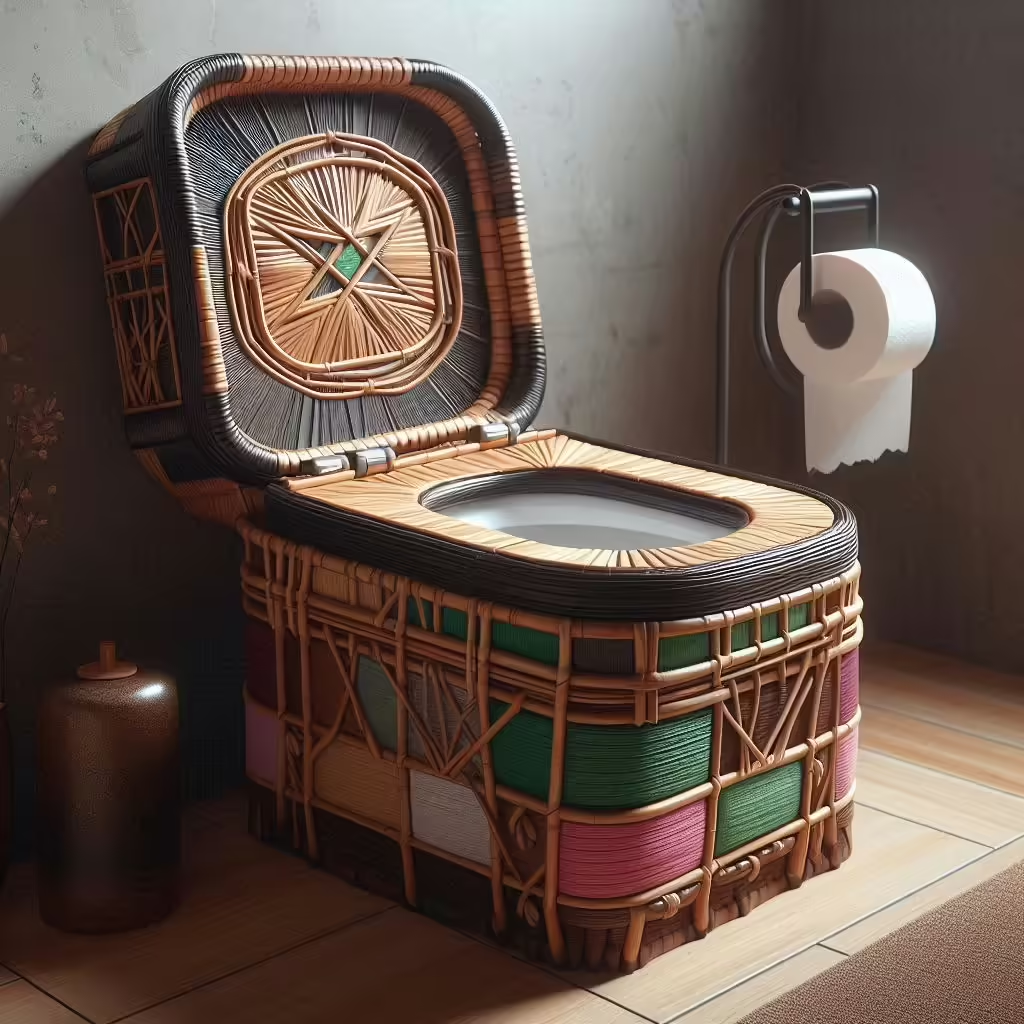As the world grapples with the growing challenges of waste management and environmental sustainability, innovative solutions are emerging across various industries. One such innovation is the bamboo basket toilet—a unique blend of traditional design and modern sustainability. In this blog post, we will explore the benefits of bamboo basket toilets, how they work, and why they may be the future of eco-friendly sanitation.
What Are Bamboo Basket Toilets?
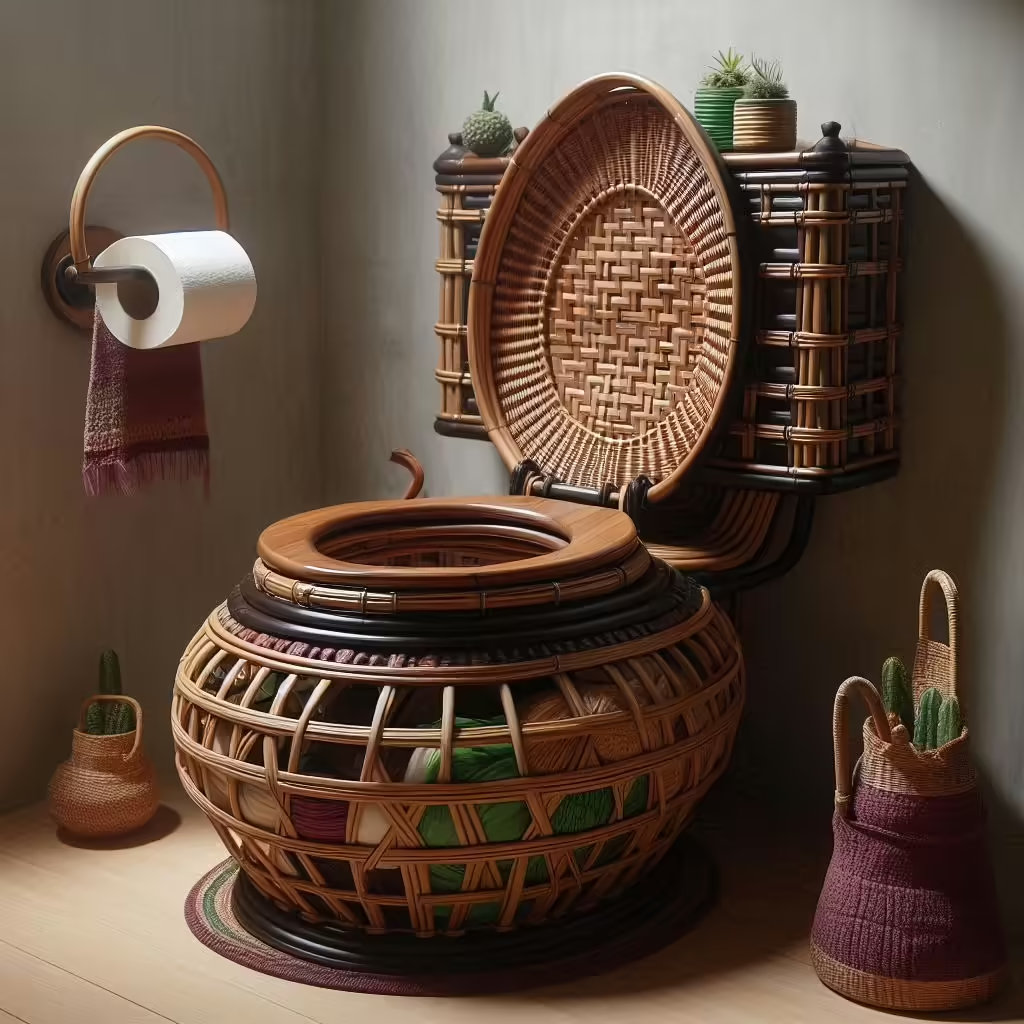
Bamboo basket toilets are composting toilets made primarily from bamboo materials. They offer a sustainable alternative to traditional flush toilets by using natural resources and creating a minimal environmental footprint. Bamboo, known for its rapid growth and strength, serves as an excellent material for constructing these toilets, providing durability and aesthetic appeal.
The Design and Functionality of Bamboo Basket Toilets
Design Features
Bamboo basket toilets typically consist of:
- A Bamboo Structure: The main framework is made of bamboo, which is not only strong but also lightweight. This makes it easier to transport and install.
- Composting Chamber: Beneath the toilet seat, a composting chamber collects waste, which naturally decomposes over time.
- Ventilation System: A well-designed ventilation system is essential for odor control and to promote aerobic decomposition.
How They Work
The working principle of bamboo basket toilets revolves around composting. Instead of flushing waste away with water, users deposit waste into the composting chamber, where it is mixed with carbon-rich materials like sawdust or coconut coir. Microorganisms break down the waste, turning it into nutrient-rich compost. This process significantly reduces water usage and minimizes environmental pollution.
The Benefits of Bamboo Basket Toilets
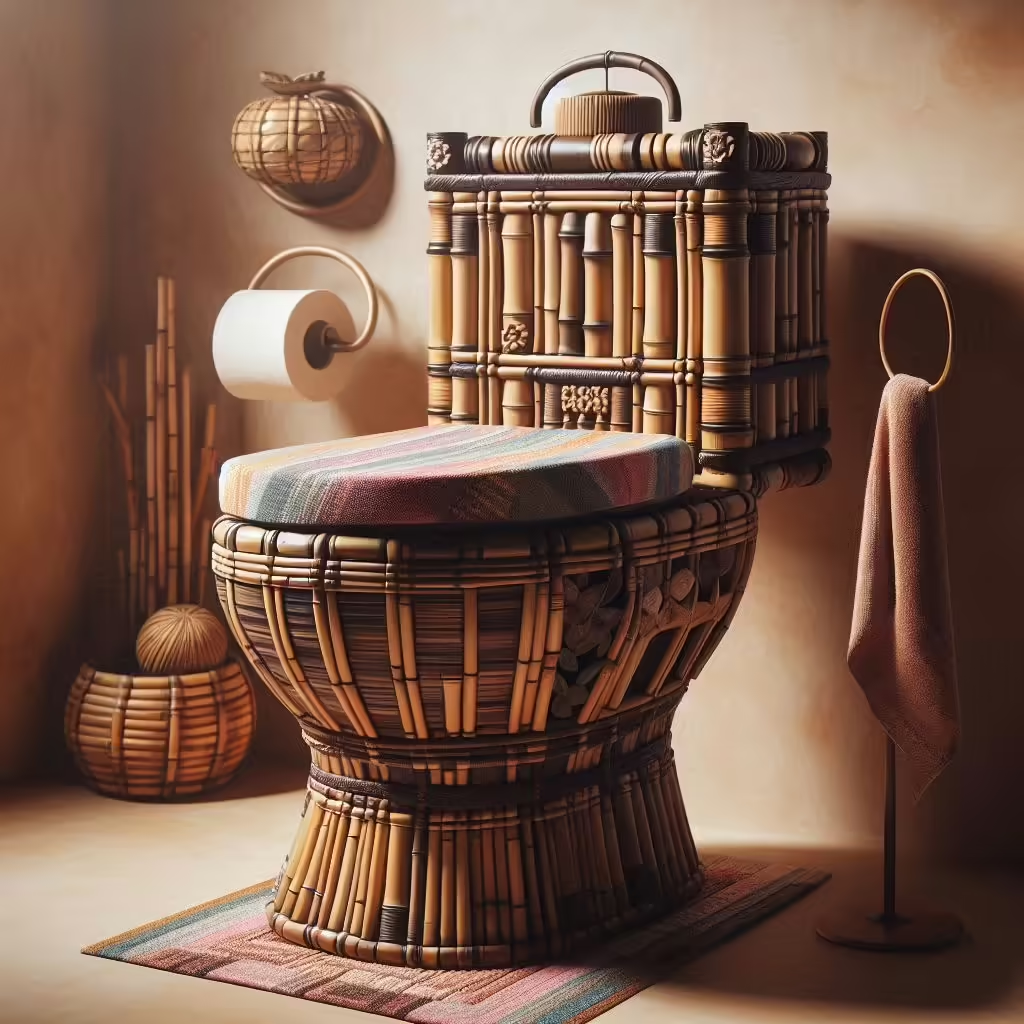
Bamboo basket toilets offer numerous advantages that make them an attractive choice for both individuals and communities:
Environmental Sustainability
Bamboo is a renewable resource that grows much faster than traditional timber. By utilizing bamboo for toilet construction, we reduce the strain on forests and contribute to sustainable forestry practices. Furthermore, bamboo basket toilets minimize water consumption, making them a water-efficient solution.
Cost-Effectiveness
While the initial investment for bamboo basket toilets may be higher than conventional toilets, they can save homeowners money in the long run. Reduced water bills, lower maintenance costs, and the ability to create compost for gardening can all contribute to overall savings.
Odor Control
A well-ventilated bamboo basket toilet effectively minimizes odors. The composting process breaks down waste in a way that prevents the unpleasant smells typically associated with traditional toilets.
Versatility and Aesthetics
Bamboo basket toilets can be designed to fit various styles and settings, making them suitable for both rural and urban environments. Their natural appearance can blend seamlessly into gardens or eco-friendly homes.
Promoting a Circular Economy
By turning human waste into compost, bamboo basket toilets contribute to a circular economy. The compost produced can be used to enrich soil, supporting local agriculture and reducing the need for chemical fertilizers.
Installing a Bamboo Basket Toilet
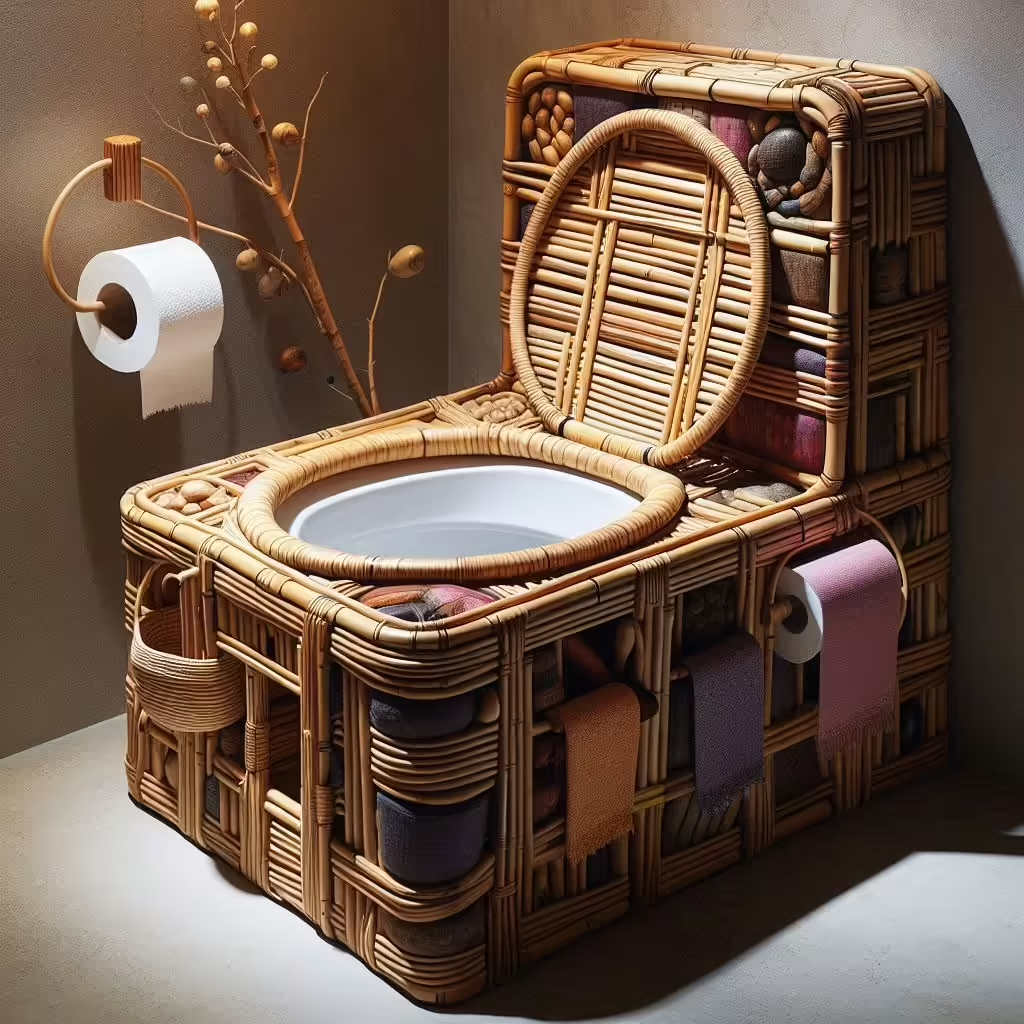
Step 1: Choosing the Right Location
Select a location that is easily accessible and has adequate drainage. Ensure that it’s not too close to water sources to prevent contamination.
Step 2: Gathering Materials
You’ll need:
- Bamboo for the structure
- Composting chamber (could be a repurposed container)
- Carbon-rich materials (sawdust, leaves, or straw)
- Ventilation pipe
Step 3: Building the Structure
- Construct the Frame: Build a sturdy frame using bamboo poles.
- Install the Composting Chamber: Ensure the chamber is well-sealed but allows for airflow.
- Create the Toilet Seat: Design a comfortable toilet seat that can be easily removed for cleaning.
Step 4: Ventilation System
Install a ventilation pipe to facilitate airflow, helping to control odors and support the composting process.
Step 5: Start Composting
Encourage users to mix waste with carbon-rich materials after each use to promote effective composting.
Maintaining Your Bamboo Basket Toilet
Regular Cleaning
While bamboo is resistant to moisture, regular cleaning is necessary to maintain hygiene. Use eco-friendly cleaning agents to avoid introducing harmful chemicals into the compost.
Checking the Composting Process
Monitor the composting chamber for any signs of odor or slow decomposition. If issues arise, consider adjusting the balance of waste and carbon-rich materials.
Harvesting Compost
Once the composting process is complete (typically after 6 months to a year), the compost can be harvested and used to enrich your garden soil. Ensure the compost is well-decomposed before using it on edible plants.
The Future of Bamboo Basket Toilets
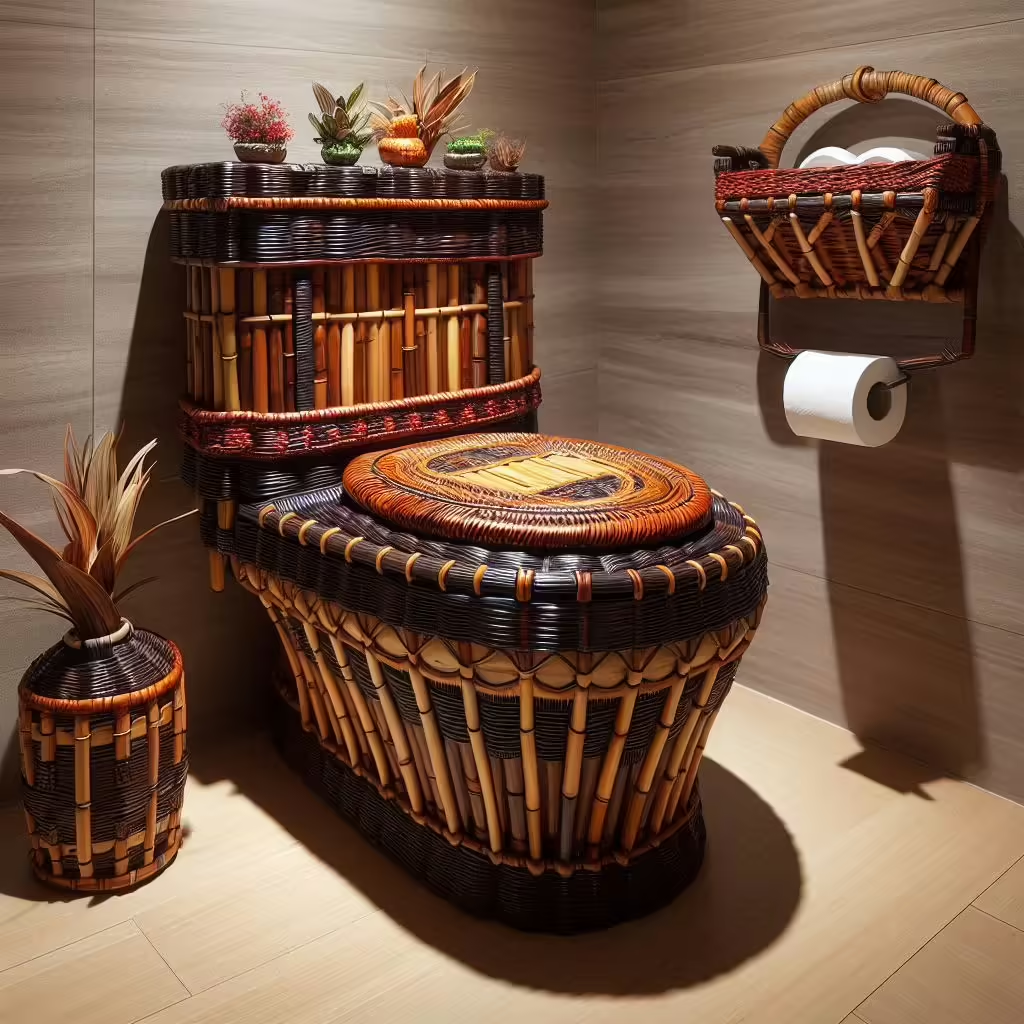
As urbanization and population growth continue to strain traditional sanitation systems, bamboo basket toilets present a viable alternative. Their sustainable design and functionality could play a crucial role in addressing sanitation challenges in both developed and developing countries.
Innovations in Bamboo Toilet Technology
Recent developments in bamboo technology are enhancing the functionality of these toilets. Innovations include:
- Advanced Composting Techniques: Incorporating microbial treatments to speed up the composting process.
- Smart Toilets: Integrating sensors to monitor composting efficiency and alert users when maintenance is required.
Global Adoption and Case Studies
Several countries have already begun adopting bamboo basket toilets in rural and urban settings. For example, in parts of Southeast Asia, communities have successfully implemented bamboo toilets as a cost-effective solution to sanitation issues, improving public health and environmental conditions.
Challenges and Considerations of Bamboo Basket Toilets
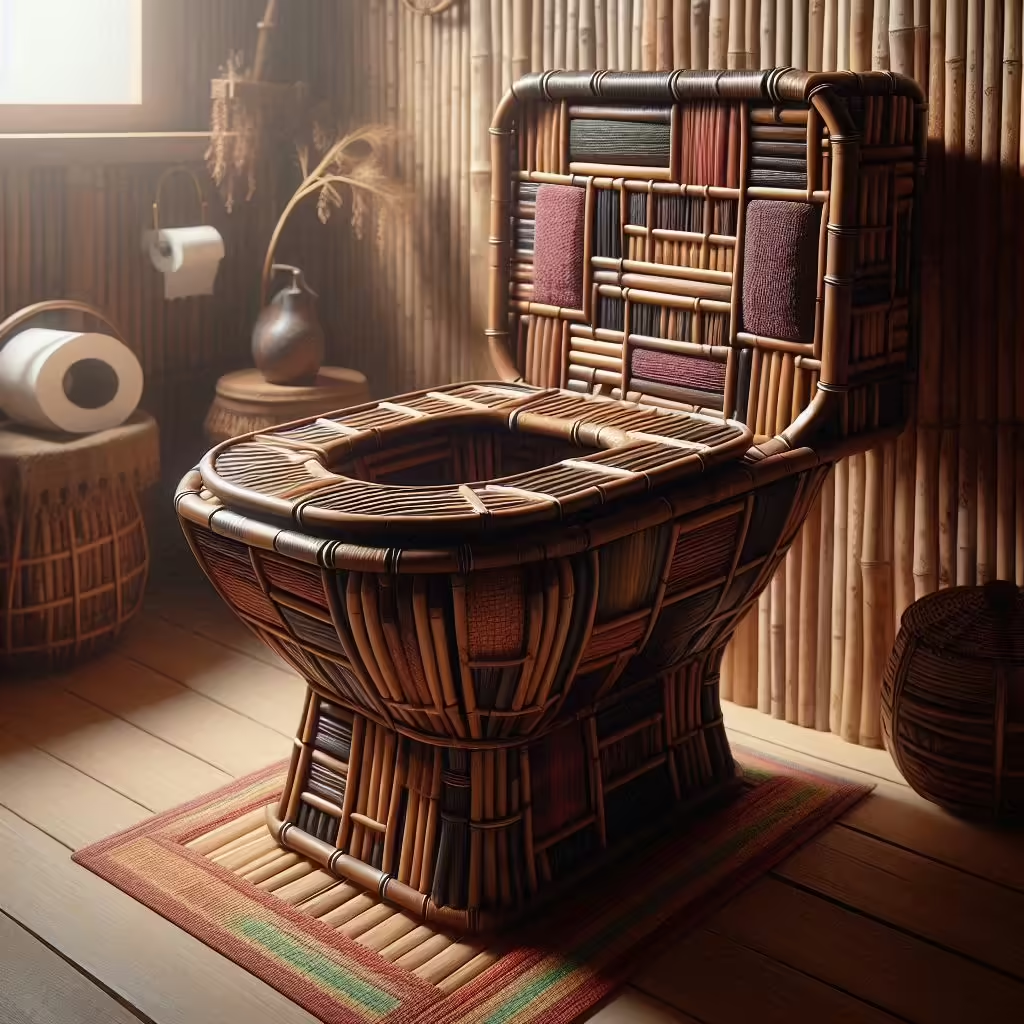
While bamboo basket toilets present numerous benefits, it’s essential to consider the challenges and factors that may influence their adoption and use.
Cultural Acceptance
One of the significant hurdles in implementing bamboo basket toilets is cultural acceptance. In many societies, traditional toilets are deeply ingrained in daily life. Education and awareness campaigns are crucial to help communities understand the benefits of composting toilets and how they can improve sanitation without sacrificing comfort or hygiene.
Maintenance Knowledge
Effective use and maintenance of bamboo basket toilets require a level of knowledge that some users may lack. Providing proper training and resources can help users understand how to operate and maintain these toilets effectively. Workshops and demonstrations can be valuable in educating communities about composting and the benefits of using bamboo as a sustainable resource.
Weather Considerations
In regions with extreme weather conditions, the durability of bamboo may come into question. While bamboo is resistant to moisture and can withstand some elements, ensuring that the structure is properly designed to withstand high winds, heavy rains, or snow is crucial. Regular inspections and maintenance can help mitigate these issues.
Regulatory Challenges
In some areas, existing plumbing codes and regulations may not accommodate the installation of composting toilets. Advocating for policy changes and developing guidelines for the safe use of bamboo basket toilets can help overcome these regulatory barriers. Collaboration with local governments and organizations focused on sustainable development can promote broader acceptance.
Innovations in Bamboo Toilet Design
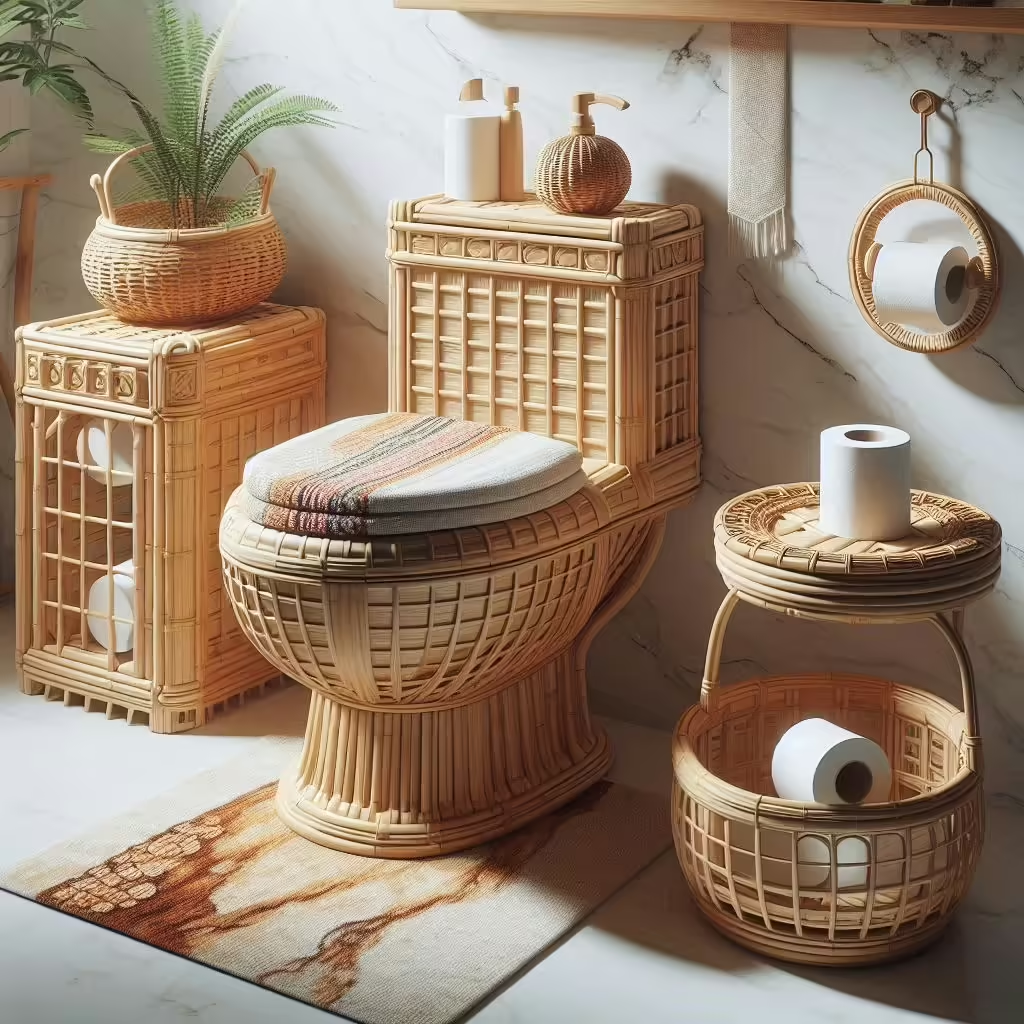
As interest in bamboo basket toilets grows, innovative designs are emerging to enhance their functionality and appeal. Some notable trends include:
Modular Designs
Modular bamboo toilets can be easily expanded or modified to meet the changing needs of users. This flexibility allows for easier upgrades and the incorporation of additional features, such as separate handwashing stations or integrated solar-powered ventilation systems.
Aesthetic Customization
To make bamboo basket toilets more appealing, designers are focusing on aesthetic customization. Offering various styles, finishes, and colors can help integrate these toilets into different environments, whether in rural settings or modern urban homes. Custom designs can include artistic carvings or decorative elements that celebrate local culture and craftsmanship.
Integrated Technology
As technology advances, the integration of smart features in bamboo toilets is becoming more common. For instance, some designs include sensors that monitor waste levels and notify users when the composting chamber needs attention. Solar-powered lighting and ventilation can also enhance user experience while reducing energy consumption.
Case Studies: Successful Implementations of Bamboo Basket Toilets
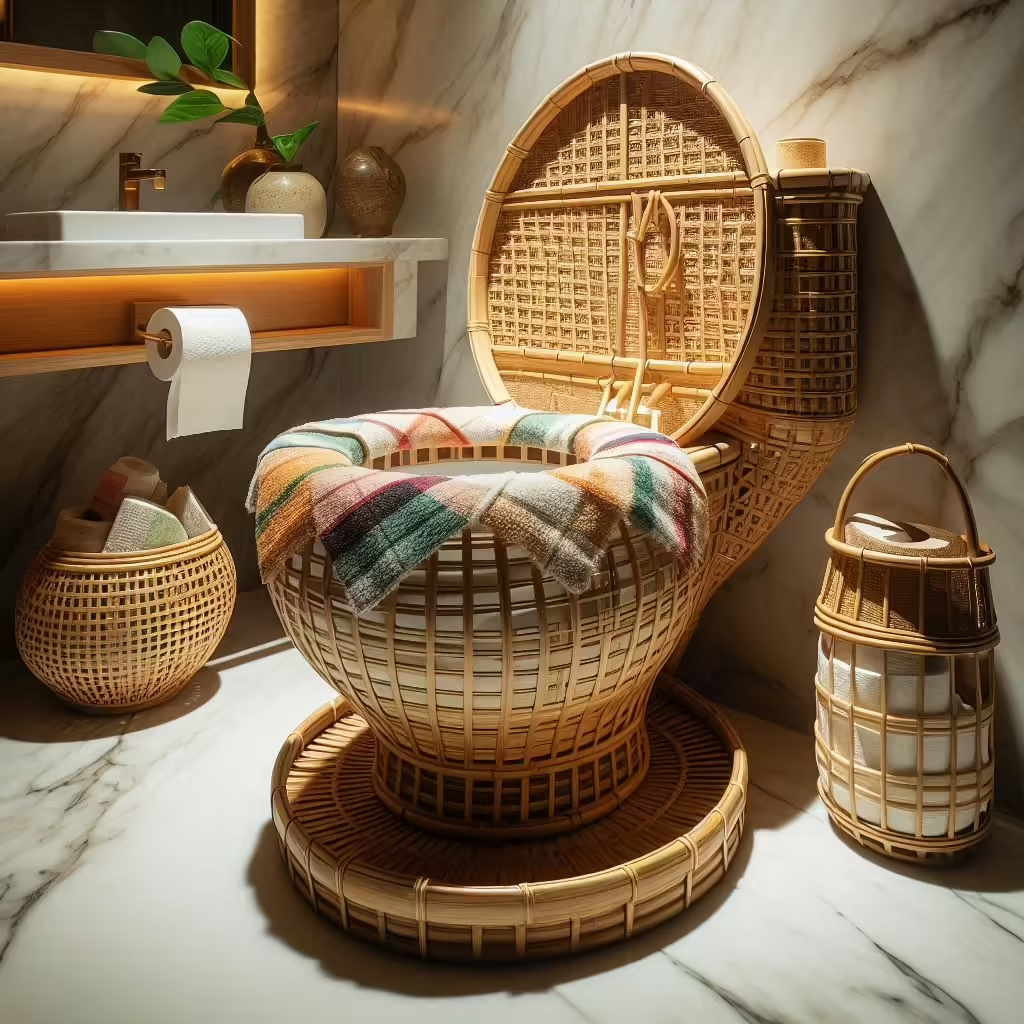
Rural Communities in Southeast Asia
In countries like Indonesia and the Philippines, bamboo basket toilets have been successfully integrated into rural communities. NGOs have partnered with local governments to provide education on the benefits of composting toilets. These initiatives have not only improved sanitation but also increased agricultural productivity by providing nutrient-rich compost for local farms.
Eco-Friendly Resorts
Several eco-resorts around the world have embraced bamboo basket toilets as part of their sustainable practices. By offering guests a unique and environmentally friendly bathroom experience, these resorts attract eco-conscious travelers and promote awareness of sustainable living. The compost generated is often used to nourish gardens, supporting local biodiversity.
Urban Urbanization Projects
In urban areas facing sanitation challenges, bamboo basket toilets have been introduced as part of community development projects. By providing cost-effective sanitation solutions in densely populated neighborhoods, these projects have significantly improved public health and environmental conditions. Community members are actively involved in the maintenance and operation of the toilets, fostering a sense of ownership and responsibility.
The Role of Bamboo Basket Toilets in Climate Change Mitigation
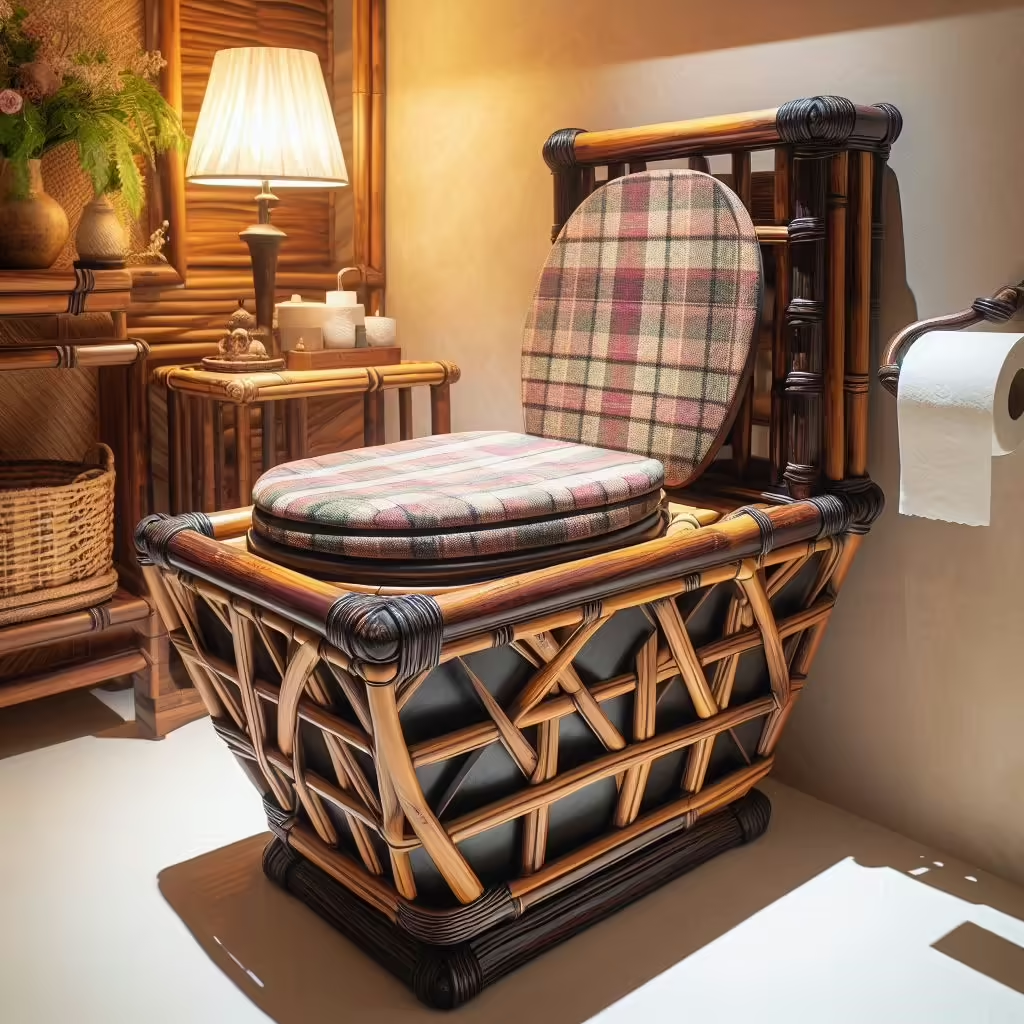
Reducing Water Usage
One of the most significant contributions of bamboo basket toilets to climate change mitigation is their ability to reduce water usage. Traditional toilets consume a significant amount of water for flushing, contributing to water scarcity in many regions. By using a dry composting system, bamboo basket toilets help conserve this precious resource, which is vital in the face of increasing droughts and water shortages.
Decreasing Methane Emissions
Conventional waste disposal methods, particularly in landfills, produce methane—a potent greenhouse gas. Bamboo basket toilets minimize waste disposal in landfills and encourage composting, which produces significantly lower methane emissions. By promoting a circular economy, these toilets contribute to lowering overall carbon footprints.
Supporting Sustainable Agriculture
The compost produced by bamboo basket toilets enriches soil and supports sustainable agricultural practices. Healthy soil leads to better crop yields, which is crucial as the global population continues to grow. By utilizing natural fertilizers, farmers can reduce their reliance on chemical inputs, further contributing to environmental sustainability.
Community Engagement and Awareness
For bamboo basket toilets to become a widespread solution for sustainable sanitation, community engagement is paramount. Building awareness around the benefits and practicalities of composting toilets will foster acceptance and encourage adoption.
Educational Programs
Launching educational programs in schools and community centers can effectively promote the advantages of bamboo basket toilets. Workshops, demonstrations, and informational campaigns can help dispel myths surrounding composting toilets, addressing common concerns about hygiene and functionality.
Involvement of Local Leaders
Engaging local leaders and influencers in advocating for bamboo basket toilets can drive community support. When trusted figures endorse sustainable practices, it can enhance acceptance and motivate others to consider eco-friendly alternatives. By showcasing successful implementations and testimonials from community members, potential users can see the real-life benefits of adopting bamboo basket toilets.
Peer-to-Peer Sharing
Creating platforms for users of bamboo basket toilets to share their experiences can encourage others to make the switch. Online forums, social media groups, and community events can serve as spaces for sharing tips, troubleshooting challenges, and celebrating successes. By building a supportive network, users can feel more confident in their transition to sustainable sanitation solutions.
The Broader Impact of Bamboo Basket Toilets
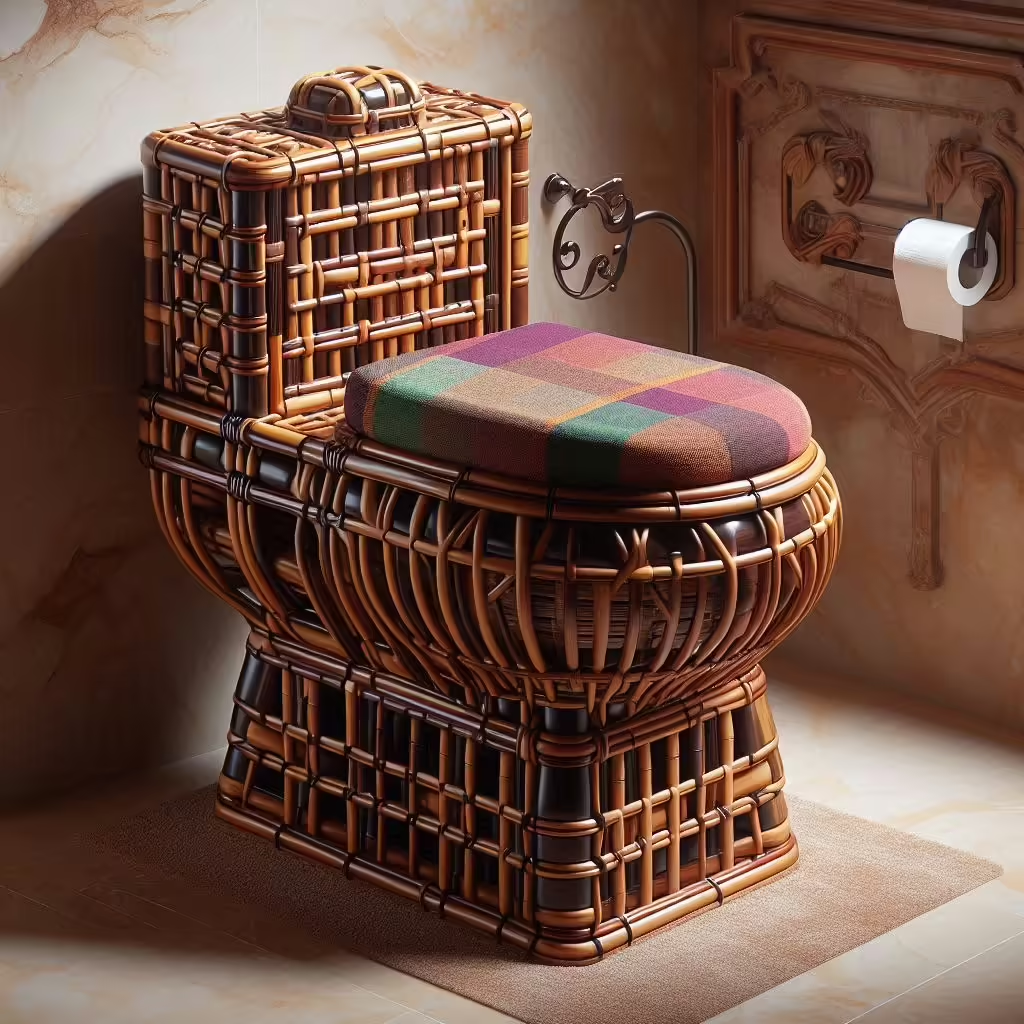
Promoting Sustainable Development Goals
The implementation of bamboo basket toilets aligns with several United Nations Sustainable Development Goals (SDGs), particularly Goal 6: Clean Water and Sanitation. By providing sustainable sanitation options, bamboo basket toilets contribute to improved health and well-being, reduced inequalities, and enhanced sustainability in urban and rural environments.
Global Replication of Successful Models
As communities around the world increasingly recognize the benefits of bamboo basket toilets, successful models can be replicated globally. Sharing knowledge and best practices across borders can facilitate the spread of sustainable sanitation solutions, helping to address pressing challenges related to waste management and public health.
Inspiring Innovation
The rise of bamboo basket toilets also encourages innovation in the field of sustainable sanitation. As designers and engineers explore new ways to improve composting technology, we may see further advancements that enhance the efficiency and effectiveness of these systems. The focus on bamboo as a building material also inspires the exploration of other sustainable materials, contributing to a greener construction industry.
Conclusion: Embracing the Future with Bamboo Basket Toilets
As we navigate the complexities of modern living, it is clear that sustainable solutions like bamboo basket toilets offer a promising path forward. By integrating eco-friendly designs into our sanitation practices, we not only reduce our environmental impact but also foster a healthier planet for future generations.
The advantages of bamboo basket toilets—from conserving water and reducing waste to promoting better agricultural practices—highlight their potential to revolutionize sanitation systems worldwide. As more communities adopt this innovative approach, we move closer to a future where sustainability is the norm rather than the exception.
By embracing bamboo basket toilets, we take meaningful steps toward a cleaner, greener, and more sustainable world. It’s time to rethink our sanitation practices and consider how simple changes can lead to profound benefits for our environment and our communities. Together, we can champion the use of bamboo basket toilets and contribute to a more sustainable future for all.
